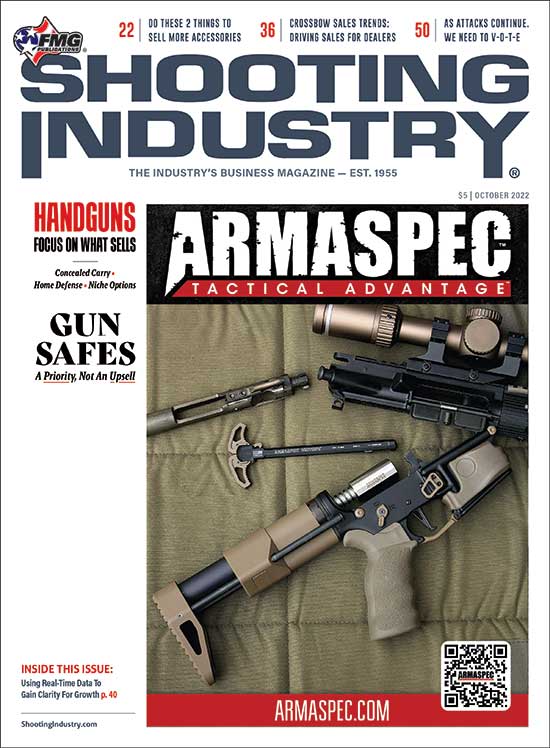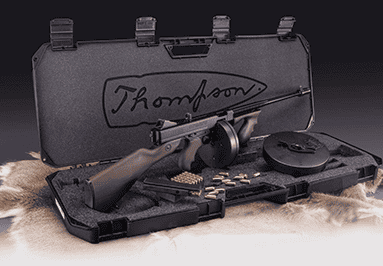Helping Customers With Carry Optics
Carry optics are burning up the handgun market today. Some of my fellow instructors tell me they have general defensive shooting classes where more than half the students show up with guns wearing carry optics, a compact version of RDS (Red Dot Sights).
Police departments are going to them in droves, either approving privately owned equipment or in some cases, issuing service pistols with the lights already mounted. This normally requires a transition class, and often new guns with slides configured for these accessories.
While all the rage, carry optics don’t immediately appeal to everyone. At the gun counter, many customers get flustered when you sell — or try to sell — them something they can’t make work. These suggestions may help.
Selling Carry Optics
There are lots of proven brands to offer: Aimpoint, Holosun, Leupold, SIG SAUER, Trijicon and more. Familiarize yourself with their features, and the features of the models each brand offers. For instance, in the Trijicon line there is the SRO with its desirable big window, but also the RMR with a smaller profile.
You need to help the customer assess his or her own needs, such as home defense vs. open carry vs. concealed carry.
Above all, it’s a product’s advantages that sell it. Here are some of the advantages of RDS, in general.
Accuracy. While it’s generally conceded they’re no great advantage in terms of marksmanship at close range, it’s just as generally accepted the more distance increases, the more these sights allow most people to hit with more accuracy. Your customer who runs a small kiosk probably won’t find much he needs in RDS in this respect. Your customer who is a farmer and carries a pistol to shoot predators on his or her property may find this element to “seal the deal.”
Better View Of Target. This often-missed advantage has proven to be a huge reason why so many police chiefs have approved RDS for their officers. When a dangerous suspect is at gunpoint, the officer’s gun can block his or her critically important view of the suspect’s hands. With some distance between the two, the Good Guy is more likely to be able to see the red dot on center mass of the Bad Guy and still have a good view of the suspect’s hands.
Target-Focus Element. It’s human nature to focus on the threat. Unfortunately, one of the first rules of marksmanship is for a perfect center hit, we have to focus on the front sight — with an iron-sighted weapon. The most widely touted advantage of RDS in general, and carry optics in particular, is the user can follow their natural instinct to have eyes focused on the target because they can also see the dot superimposed over it.
Getting “On the Dot”
You know how when you play with your pet cat with a toy laser projector, the kitty can never catch the red dot? Well, some shooters new to carry optics can’t catch that particular red dot either. At least at first.
Even instructors who specialize in RDS differ in their opinions on how to help someone new to this gear to find the red aiming marker immediately. Some recommend their particular version of “modern isosceles” stances, with constant practice to establish the necessary hand-eye coordination. Others have taught students to memorize a contact point between the side of their jaw or chin and the bicep to align the head with the line of aim.
I had good luck with the latter approach when I started using red dots back in the ’80s. I shot the Bianchi Cup with a Smith & Wesson Model 686 revolver, its action perfectly tuned by the late, great Andy Cannon. Atop its frame was a Tasco ProPoint red dot sight, which still works to this day. Of course, it seems huge now in comparison with compact carry optics. Head/arm alignment (which I call a “bridge index” because it’s sort of a bridge between aimed fire and point shooting) is a felt index the shooter can snap up to and instantly “find the dot.”
Sometimes, failure to find the dot can be an eye issue. At the Bianchi Cup event I mentioned, I reasoned since one great advantage of the optical sight is being able to focus on the target, it made sense to use my far-sighted left eye instead of my near-sighted right. Being right-handed, I would be shooting cross-dominant. I found the dot would come to the left eye naturally with the Cannon-tuned 686 if I kept my head straight up “on a swivel” and brought my chin to the bicep of my extended right arm.
This is a workable fix for any cross-dominant shooter with RDS — and even with iron sights for that matter — so long as they lock the gun arm straight out. It’s probably the quickest fix you can do in a gun shop with a multi-checked unloaded pistol for the cross-dominant customer.
Binocular Vision Conundrum
There are other eye problems that can crop up. Here’s a comment from a participant at one of the very best gun forums out there, pistol-forum.com.
“Took an intermediate pistol class a week ago, my first outing with an RDS-equipped handgun, my Staccato C2 with PA Holosun/ACSS. We did the tape-over objective to demonstrate the brain’s ability to fuse left- and right-eye imagery and thus the value of shooting with both eyes open.
“You know how when you play with your pet cat with a toy laser projector, the kitty can never catch the red dot? Well, some shooters new to carry optics can’t catch that particular red dot either. At least at first.”
“I explained to the instructor I didn’t have binocular vision, but he couldn’t get the picture. He asked me what I saw when on target; I answered: the red dot in my right visual field, the target in my left visual field. We did some shooting drills at close range and I would hit the target by simply matching the outline of the RDS with the target. He finally gave up and let me remove the tape.”
He continued, “I have experienced an issue, fortunately not often, where my brain switches to my left eye and I lose the sights completely; this can occur because my shooting glasses are set up with 2 meter focus for the right (dominant) eye and distance focus left eye. Distance targets tend to be clearer in the left eye as a result and my brain can select the wrong eye when it gets off task. This is post-cataract surgery where, obviously, I can’t change focus. The 2 meters (1/2 diopter add) works well for both irons and RDS.”
All this to say: be aware of other challenges customers may face in “getting on the dot.”
Warn About Disadvantages
We owe it to the customer to warn them about any shortcomings. Here are some worth mentioning.
Battery Dependency. RDS are battery dependent — and batteries can fail at the worst possible time. This is particularly true in deep cold weather. Therefore, it’s critical a defensive weapon with a carry optic has backup iron sights for this reason.
Sight Obstruction. For someone using a RDS outdoors, in particular, rain or snow can gather on the lens and obscure the sight picture. In another scenario, lights behind the gun (like a flashlight held in a neck hold, for example) can flare on the lens and wash out the red dot.
Beware Of Fog. Fog is an issue when going from a cool area into a hot and humid one. This, like glare on the lens, can block the shooter’s view of even the backup iron sights. Please tell the buyer to get defogger and apply it regularly; consider stocking some yourself for sale or even giving a bit of it to an RDS buyer.
It’s indeed a truism nothing is perfect. Though carry optics’ advantages are so significant they’ve become best sellers, they’re not without their foibles. If we warn our trusting customers about problems they may encounter, and show them how to deal with those problems, we’re fulfilling an ethical obligation and perhaps even saving their lives.






